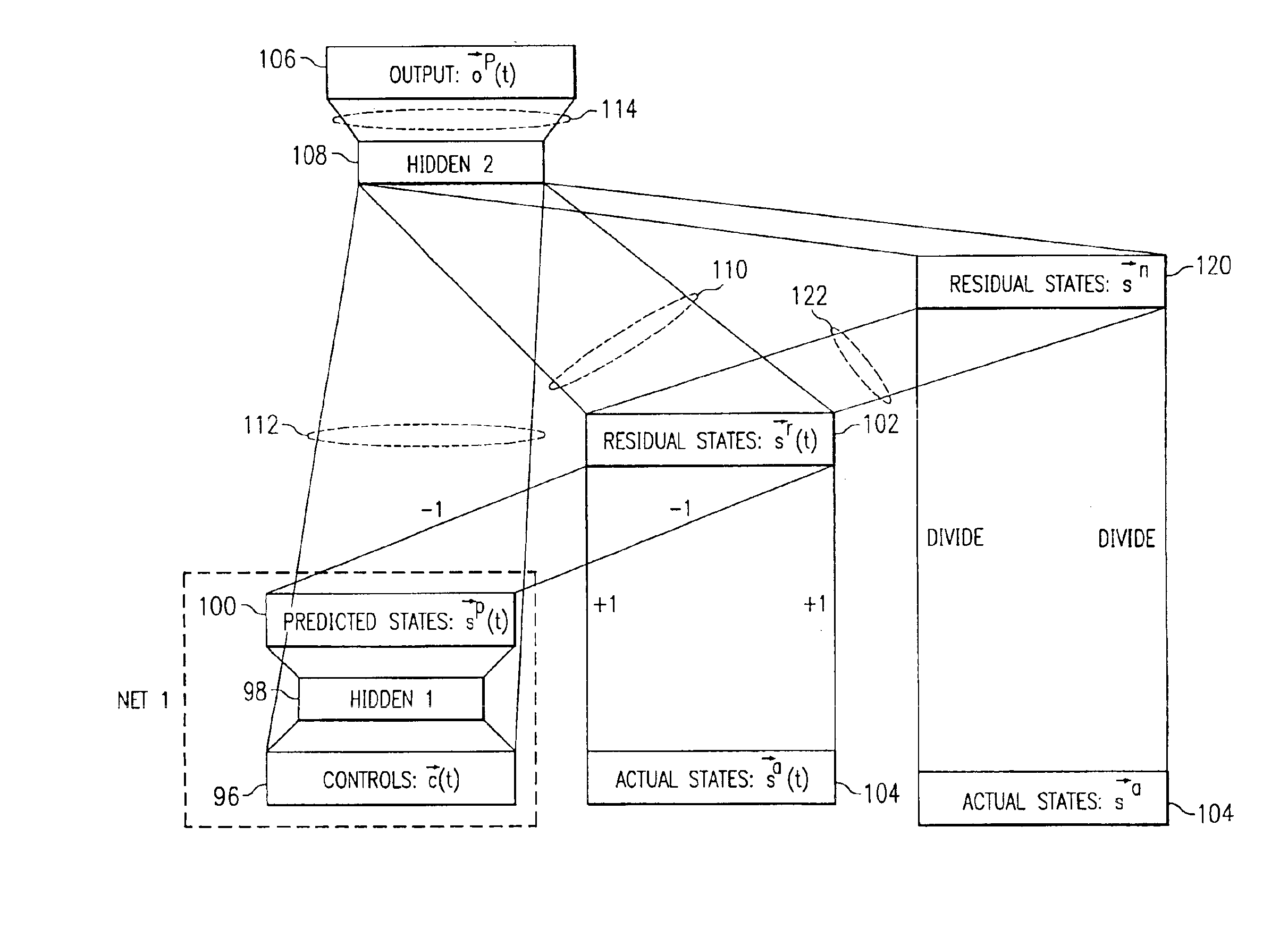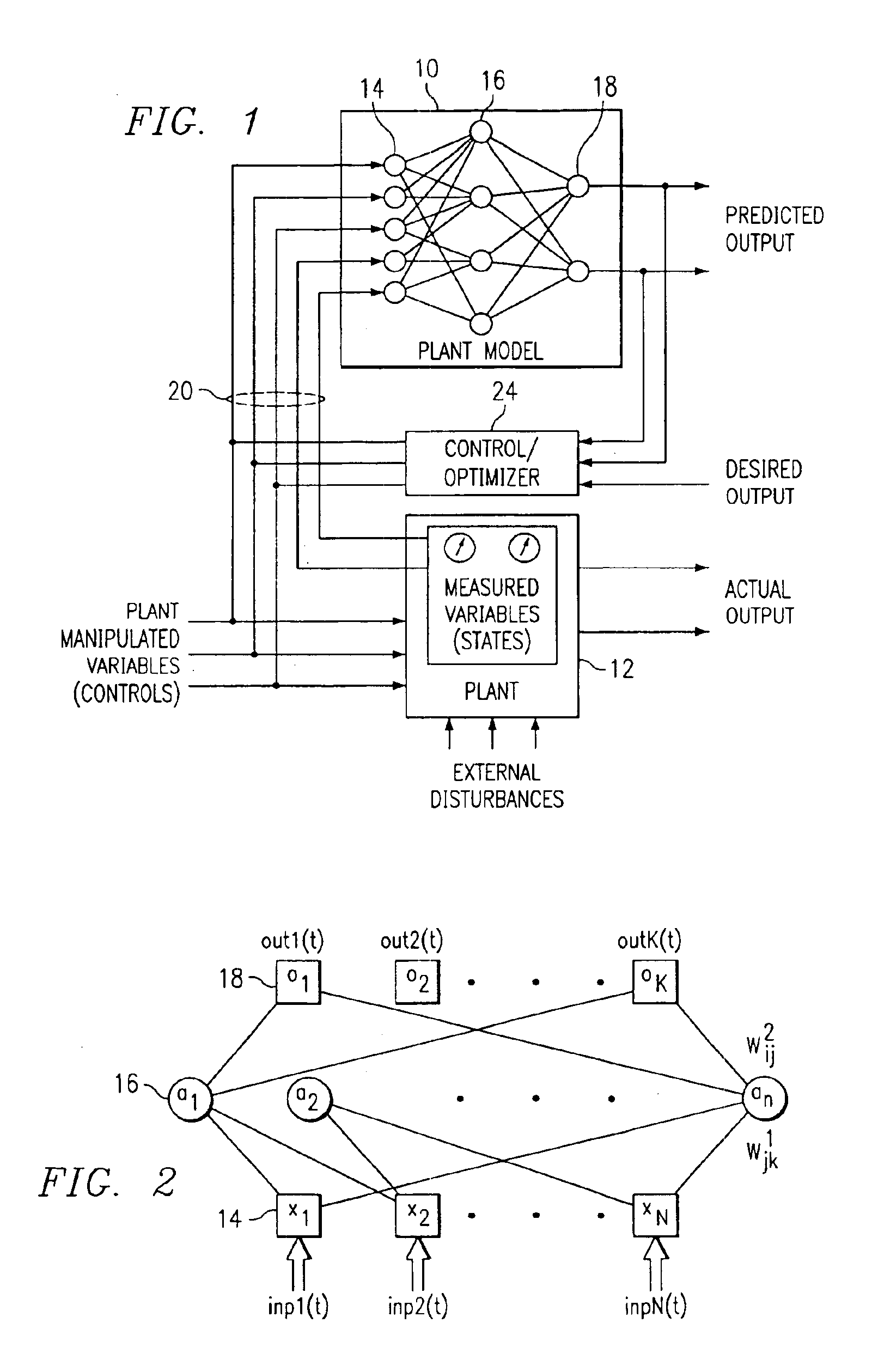Residual activation neural network
- Summary
- Abstract
- Description
- Claims
- Application Information
AI Technical Summary
Benefits of technology
Problems solved by technology
Method used
Image
Examples
Embodiment Construction
[0030]Referring now to FIG. 1, there is illustrated a diagrammatic view of a predicted model 10 of a plant 12. The plant 12 is any type of physical, chemical, biological, electronic or economic process with inputs and outputs. The predicted model is a neural network which is generally comprised of an input layer comprising a plurality of input nodes 14, a hidden layer comprised of a plurality of hidden nodes 16, and an output layer comprised of a plurality of output nodes 18. The input nodes 14 are connected to the hidden layer node 16 through an interconnection scheme that provides a non-linear interconnection. Similarly, the hidden nodes 16 are connected to the output nodes 18 through a similar interconnection scheme that is also non-linear. The input of the model 10 is comprised of an input vector 20 of known plant inputs, which inputs comprise in part manipulated variables referred to as “control” variables, and in part measured or non-manipulated variables referred to as “state...
PUM
 Login to View More
Login to View More Abstract
Description
Claims
Application Information
 Login to View More
Login to View More - R&D
- Intellectual Property
- Life Sciences
- Materials
- Tech Scout
- Unparalleled Data Quality
- Higher Quality Content
- 60% Fewer Hallucinations
Browse by: Latest US Patents, China's latest patents, Technical Efficacy Thesaurus, Application Domain, Technology Topic, Popular Technical Reports.
© 2025 PatSnap. All rights reserved.Legal|Privacy policy|Modern Slavery Act Transparency Statement|Sitemap|About US| Contact US: help@patsnap.com



